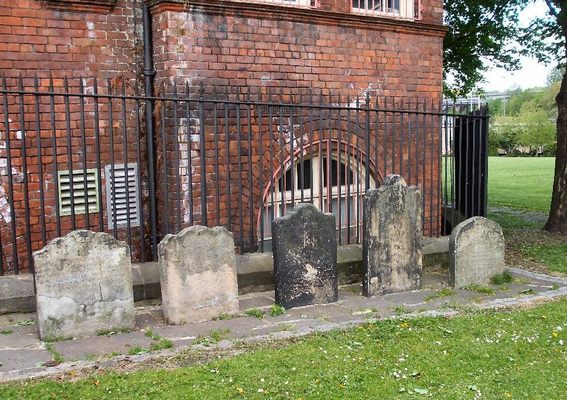About
This burial ground-turned-public park located in a former industrial area of Newcastle has a fascinating history.
Until the development of water-based ballast systems on ships, some ports needed to dispose of large volumes of materials used as ballast on unladen ships. The volumes could be enormous and on both sides of the river Tyne, where ships were predominantly used to export coal and other minerals. The disposal of ballast created numerous tips, which were known as ballast hills. In Tyneside, this even resulted in some complex railway systems to get the ballast from the unloading docks to the disposal points but at the cemetery site it is recorded that in the 17th century, women carried baskets of ballast on their heads to the tip. This ballast hill was the closest to the Ouseburn estuary, commonly used as a coal port.
Some of the material was useful and some recycling took place, particularly sand which encouraged the local glass industry. The waste from glassworks was often added to the ballast hills. The need to create disposal points for solid ballast started to disappear in the 1880s when ships started to use water ballast systems.
The Ouseburn area was one of the first manufacturing centers in Newcastle. As such, in the early 18th century, it started to attract workers. Many of them were religious non-conformists including English Methodists, Quakers and Baptists, Scots Presbyterians, and European Protestants. These people did not wish to bury their dead in the churchyards of the established Anglican Church.
Burials had been carried out on the Ouseburn ballast hills during plague outbreaks in the 17th century, so the fields were also known as "the Plaguey Fields." From the 18th century onward, the site became increasingly popular for non-conformist burials. The numbers of non-Anglican protestants increased locally to the extent that in 1825, a local newspaper reported that the number of burials on the ballast hills at Ouseburn between 1818 and 1824 exceeded all burials in all parish churchyards in Newcastle. (This may be skewed by the fact that it was also used for the burial of paupers of all denominations.)
In the late 18th century, the place gained a reputation for grave robbing. Later, after the medical school opened in 1832, body snatchers were known to obtain bodies used as cadavers for dissection here. A petition was raised demanding that a wall be built around the site. In 1827, the site was enlarged, making it the largest non-conformist burial ground outside London, but it fell out of use in 1853-54 after a cholera epidemic led to the closure of many urban graveyards. The total buried is thought to exceed 37,000.
In 1930, the current site was established as a children's playground, and is still a public open space but much of the three-acre site was already built over. Most of the remaining memorial stones (about 200) were laid flat to form paving for footpaths. Most have suffered erosion and wear but many are still decipherable. There are some tombstones mounted vertically as a group which were of the clergymen of various denominations that were buried here.
Related Tags
Know Before You Go
The open-top tourist bus (hop-on-hop off) stops close to the cemetery. It is called the "Toon Tour" (recognizing the local accent) and in 2024 is priced at £12.50 for a full day.
Community Contributors
Added By
Published
September 23, 2024

























